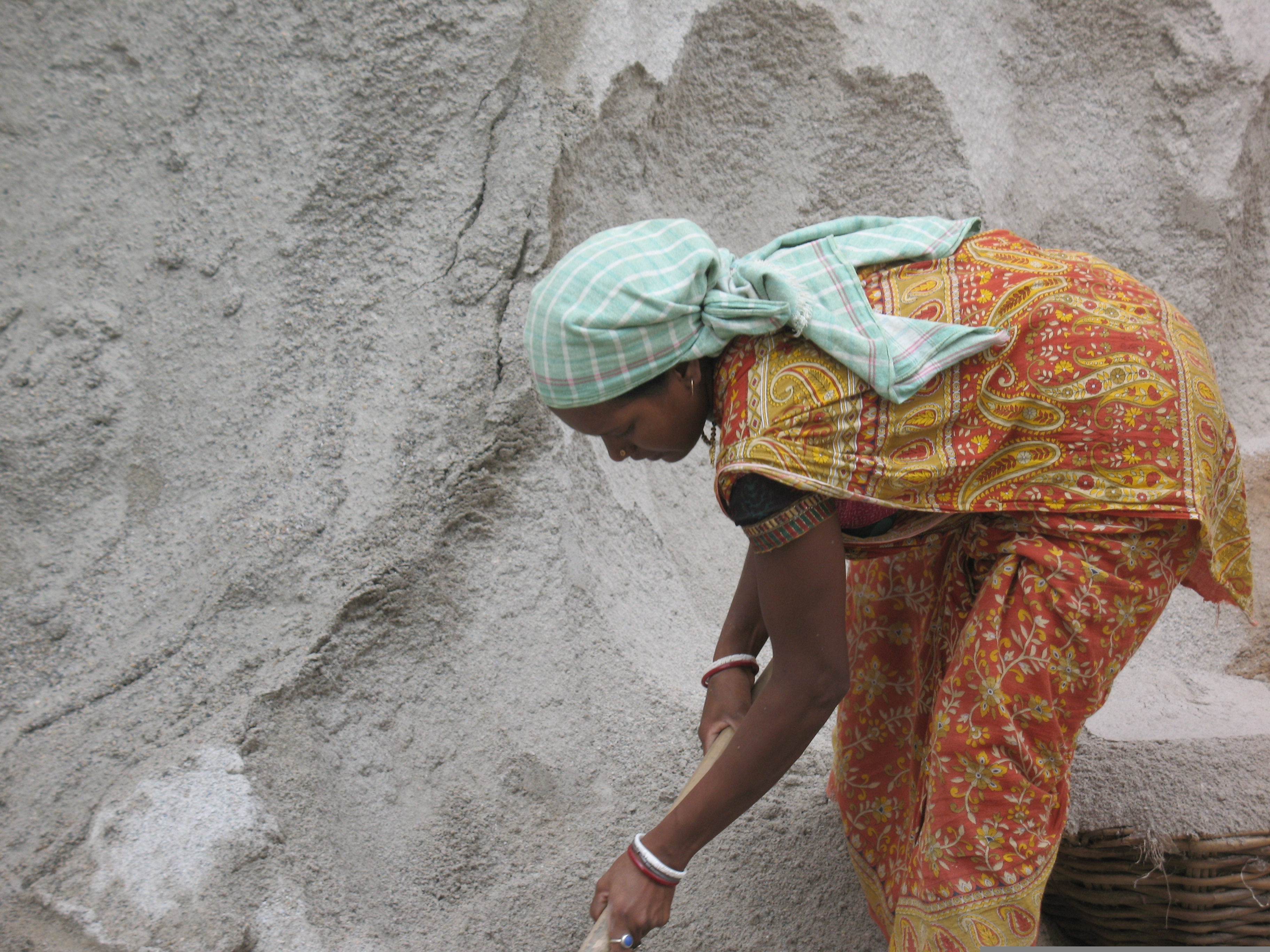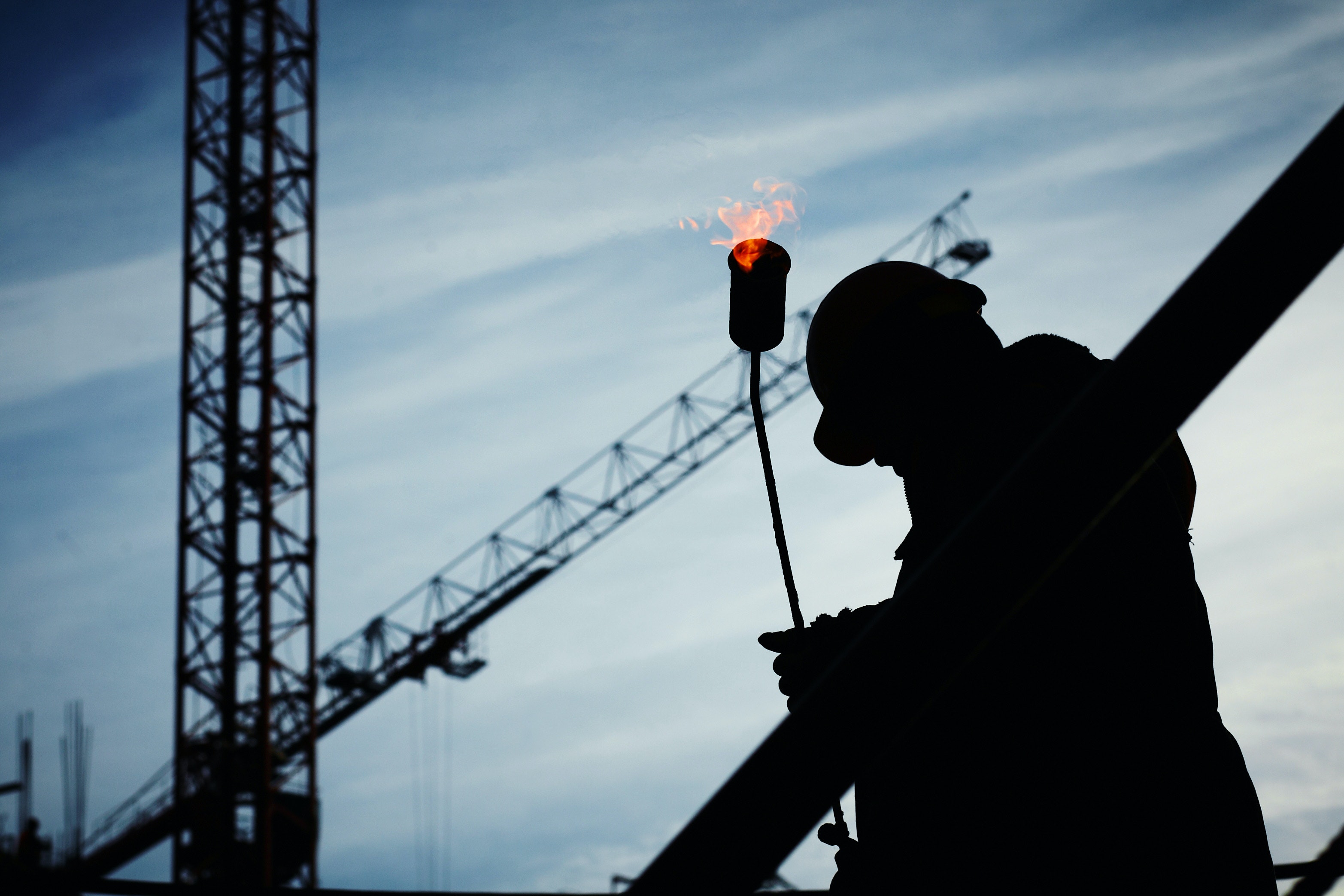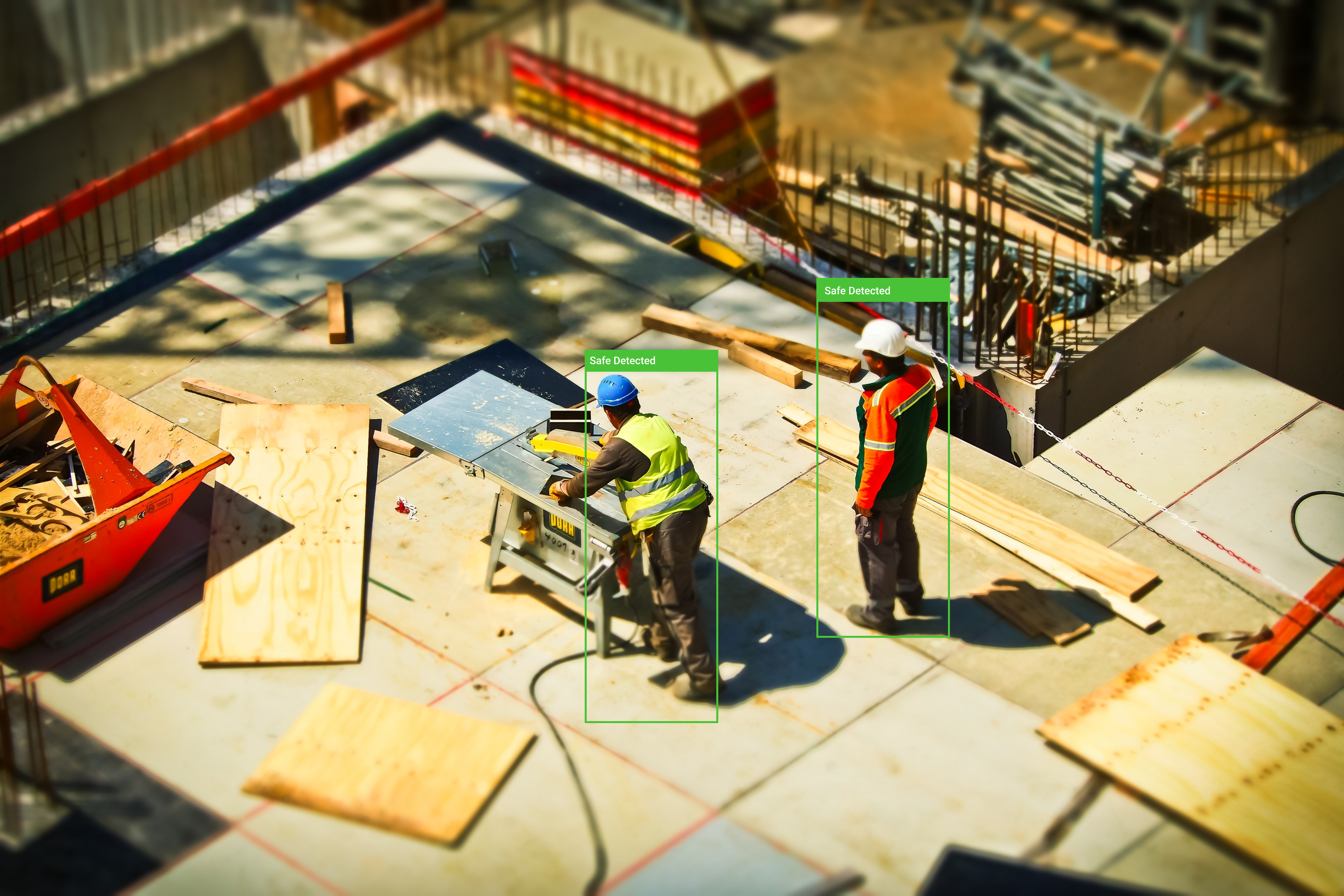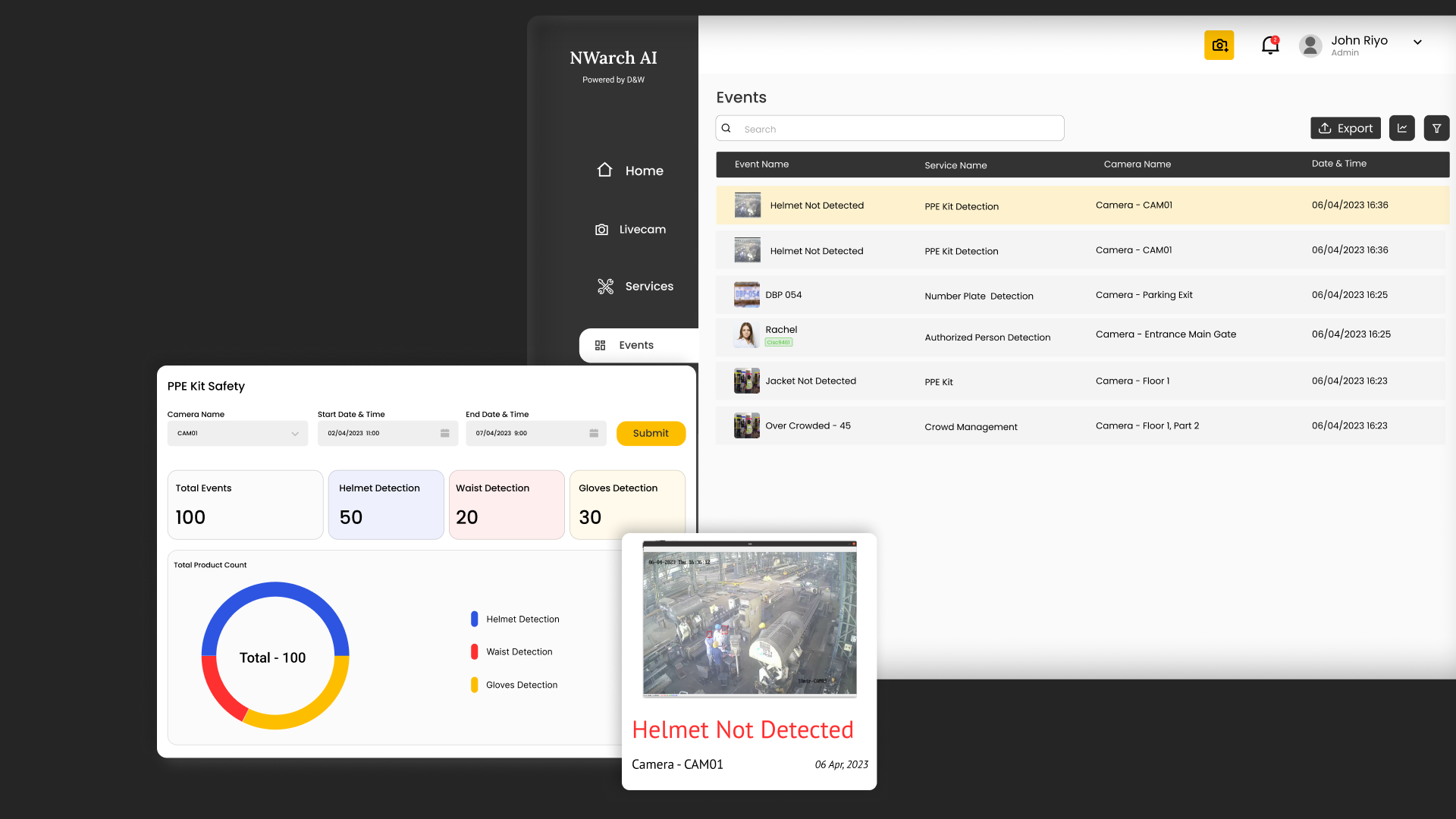

Construction involves the building, upkeep, and fixing of buildings, structures, roads, and public facilities. It also includes adding or changing important parts like walls and beams. Each construction project has its own specific steps, like planning, financing, designing, and carrying out the work, as well as taking care of repairs, maintenance, and improvements. The construction market includes the money earned by individuals, organizations, and partnerships involved in constructing buildings and engineering projects like highways and utility systems.
The global construction market has witnessed significant growth in recent years, driven by various factors such as economic expansion in emerging markets, favorable interest rates, and the need for infrastructure catering to an aging population. However, geopolitical tensions and rising material costs have posed challenges to this growth.
In 2021, the global construction market recorded a value of approximately $13,570.90 billion, exhibiting a compound annual growth rate (CAGR) of 4.6% since 2016. The market is projected to expand from $13,570.90 billion in 2021 to $22,873.96 billion in 2026, at a robust growth rate of 9.8%. Furthermore, from 2026 to 2031, the market is expected to grow at a CAGR of 11.5%, reaching a substantial value of $39,352.08 billion.
Construction work done up from US$9.7 trillion in 2022 to US$13.9 trillion in 2037—driven by superpower construction markets China, the US and India. India forecast to be the fastest growing construction superpower.
The future growth of the construction market will be propelled by two key factors. Firstly, increasing investments in renewable power generation capacities will create new opportunities for construction projects. The transition towards sustainable energy sources is driving the construction of renewable infrastructure worldwide. Secondly, rapid urbanization in many regions will drive demand for new residential and commercial buildings, as well as the development of smart cities.
While the construction market presents promising growth prospects, several challenges may hinder its progress. The outbreak of the COVID-19 pandemic has disrupted construction activities globally, leading to project delays and supply chain disruptions. Health and safety measures also to impact the industry, requiring adaptation and compliance to ensure worker well-being.
Asia-Pacific has the biggest share of the global construction market and is expected to maintain its dominance in the future. This is because of factors like a growing population and increased construction activities in countries such as India, Indonesia, Vietnam, China, and Southeast Asian nations. Moreover, advancements in technology, supportive government policies, and regulations offer significant growth opportunities for construction companies in this region. Major players like Tata Projects, L&T, KEC International Limited, China State Construction Engineering Corporation, Kalpataru Construction, Oberoi Reality, and Shapoorji Pallonji Co. Pvt. Ltd. also contribute to the growth of the construction market in Asia-Pacific.
India’s infrastructure and construction sectors are crucial to India’s economic ecosystem. With the development of world-class facilities like roads, waterways, railways, airports, ports, and residences, offices, retail, hotels and leisure parks across the country, the public and private sectors are playing a crucial role in India’s growth story. India is poised to become the world’s third-largest construction market.
The construction industry in India is expected to keep growing steadily in the coming years, despite some challenges in certain areas. Over the next four quarters, the industry is predicted to continue growing. From 2023 to 2028, it is estimated that the industry will have an average yearly growth rate of 9.9% and reach a construction output value of INR 66,954.8 billion by 2028. Even though construction costs have gone up, the government is still investing in infrastructure projects, and this is likely to continue in 2023.
The demand for housing is also driving the construction market in India. Despite higher construction costs and interest rate increases, more people are buying homes, which has led to a recovery in the real estate market. The growth has been strongest in the mid-range, premium, and luxury housing segments in 2022.
The government places great emphasis on infrastructure and construction services, implementing focused policies like allowing foreign direct investment (FDI), allocating a significant budget to the infrastructure sector, and implementing the Smart Cities mission. This sector is a major employer, providing jobs to 51 million people and ranking as the second-largest employing sector in India. India boasts 100 Smart Cities and 11 Industrial Corridors within the country. Additionally, the real estate sector is the third largest recipient of foreign direct investment (FDI), the second largest job creator, and the third largest sector contributing to economic growth.

Industrialization, driven by the implementation of advanced technologies, plays a crucial role in the overall development of a country. The construction of buildings serves as a fundamental aspect of industrial growth. Construction industry encompasses a wide range of activities and employs a significant number of workers, primarily in the informal or unorganized sector.
Many construction workers face difficult and unsafe conditions while working and living. They often have inadequate housing, food, and sanitation facilities. Additionally, they are subjected to unsafe working practices and lack access to proper healthcare and insurance coverage. Despite these challenges, many workers are drawn to construction jobs because they offer more stable employment and higher wages compared to agricultural labor.
The nature of their occupation leads to significant socio-economic stresses. They lack proper security measures while working and are susceptible to exploitation by contractors. Additionally, there is no specific time frame or work structure provided to them, resulting in an average workday of approximately 10 hours. Many of these workers are migrants who may face higher risks of injuries and accidents due to their transient nature of work.
Unfortunately, many construction workers experience poor working conditions and lack necessary protections. Construction sites are often dangerous and ill-equipped, leading to frequent accidents and injuries, as reported in the media on a daily basis.
Worker safety regulations in developed countries play a crucial role in ensuring the well-being and protection of construction workers. These regulations are designed to minimize workplace hazards, prevent accidents, and promote a safe working environment.
Developed countries have established comprehensive occupational health and safety standards that outline the minimum requirements for construction sites. These standards cover areas such as hazard identification and risk assessment, protective equipment, training programs, emergency response protocols, and regular inspections. Construction workers in developed countries are required to undergo safety training and education programs. These programs equip workers with the knowledge and skills necessary to identify potential hazards, follow safe work practices, and use protective equipment properly. Government authorities in developed countries enforce safety regulations through regular inspections of construction sites. Inspectors ensure that construction companies comply with safety standards and take appropriate measures to address any identified hazards or violations. Non-compliance can result in penalties, fines, or even the suspension of construction activities. Developed countries often have robust worker rights and representation systems in place. Construction workers have the right to report safety concerns, participate in safety committees, and refuse work that they believe poses a serious risk to their health and safety without fear of retaliation.Developed countries typically have well-established worker compensation and insurance schemes to provide financial protection to workers in the event of work-related injuries, illnesses, or fatalities. These schemes cover medical expenses, lost wages, rehabilitation, and other necessary support. The focus on worker safety regulations in developed countries underscores the importance of prioritizing the well-being of construction workers and creating a safe working environment in the construction industry.
In the UK, for example, employers are legally bound to assess the risks to their workers’ health and safety. If the risks are significant then the employer must take steps to remove or reduce them to a reasonably practical level. The regulations also cover the management of risks to workers’ health, safety, and welfare during construction work.
In the United States, the implementation of safety regulations in the construction industry led to a significant decline in workplace fatalities. According to the Occupational Safety and Health Administration (OSHA), the number of construction-related fatalities decreased from 1,204 in 1970 to 1,061 in 2019, despite an increase in construction activities over the years.
In Australia, the construction industry witnessed a decrease in the rate of serious workers' compensation claims. According to Safe Work Australia, the rate of serious claims in the construction industry dropped from 11.1 claims per 1,000 workers in 2000-01 to 5.5 claims per 1,000 workers in 2018-19.
In Germany, the implementation of safety regulations in the construction industry has contributed to a positive safety culture. The frequency rate of accidents resulting in more than three days of absence per 1,000 workers decreased from 31.1 in 2006 to 19.8 in 2019, as reported by the German Social Accident Insurance (DGUV).
In New Zealand, the focus on worker safety has led to improved training and skills development programs in the construction industry. The number of workplace injuries in the construction sector decreased from 3,537 in 2007 to 2,238 in 2019, according to WorkSafe New Zealand.
On Contrary developing countries often face challenges in implementing and enforcing effective occupational health and safety (OHS) measures in the construction industry. Here are some reasons why developing countries may struggle in this areas Limited Resource, Lack of Awareness and Education, Informal Economy and Unregulated Workforce, Weak Regulatory Frameworks, Corruption and Lack of Accountability, Rapid Urbanization and Infrastructure Development. Addressing these challenges requires a multi-faceted approach, including investment in infrastructure, technology, education, and training programs, strengthening regulatory frameworks, promoting awareness campaigns, and enhancing enforcement mechanisms. International cooperation and support can also play a vital role in assisting developing countries in improving OHS practices in the construction industry and ensuring the well-being of their workers.
To regulate the working conditions and protect the rights of workers in this industry, both the Government of India and State governments have established Acts and Rules. Some of these regulations also incorporate social welfare measures, including various social security schemes implemented by different governments. According to the National Commission for Enterprises in the Unorganized Sector (NCEUS), workers in the construction industry face adverse working environments and are exposed to occupational health hazards. These workers are typically impoverished and vulnerable, often facing temporary employment conditions.

The global construction sector has gained notoriety for its alarming rates of injuries, accidents, fatalities, and inadequate attention to the health and well-being of its workforce. Although this issue persists in both developed and developing countries, it is particularly severe in developing countries that are experiencing significant investments in infrastructure development. It is imperative to address and enhance health and safety practices within the construction industry, especially in developing nations.
The construction sector is one of India’s biggest job providers. However, it is also known to be among the most hazardous sectors. The number of fatalities reported per day is very high. A report by researchers at the National Institute of Technology, Surat, in 2016, estimated that the construction industry accounts for around a quarter of all workplace accident fatalities in India. The Indian Institute of Technology (IIT), Delhi, in a study in 2019, found that falls, electrocutions, and collapsing walls and scaffolding at construction sites are the major causes of work-related deaths in the construction industry.
Dr Shyam Pingle, occupational health specialist with the Indian Institute of Public Health (IIPH), Gandhinagar, said, “There is just one occupational diseases course of three months in the country. It began after the Bhopal gas disaster. In all, 2,800 doctors have so far taken up the course. There are just four Employees State Insurance (ESI) centres for occupational diseases in the country – none of Gujarat.”
The result is, lack of awareness about occupational diseases in India. “In India, there were 70,000 to 80,000 workplace accidents in 2011. However, there were 3,20,000 cases of occupational diseases, which is four times as high. Unfortunately, we are unable to see slow death because of such diseases”, said Dr Pingle.
A recent seminar in Ahmedabad, organized by the Bandhkam Majoor Sangathan (BMS) with the participation of workers, activists, builders, occupational health experts and government officials, was told that a British Safety Council study reveals revealed that not only do construction workers in India enjoy no legal protection, their on-site deaths is 20 times higher than those in Britain, 25% of the deaths result from falling from a height, and nearly 80% of the workers work in unsafe environment.
In the absence of proper safety standards, protocols, and practices in most of the medium and small construction companies, the staggering numbers are not surprising. With proper safety measures in place, and the top management of these companies giving equal importance to health and safety of the workmen, as they do for the progress of work, these deaths can be prevented. India could learn valuable lessons from developed countries, where fatalities are significantly lower and where the health and safety record of the construction industry has significantly improved in recent years due to their matured health and safety management system.

A 2017 McKinsey report says construction firms could boost productivity by as much as 50 percent through real-time analysis of data. “The industry desperately needs this type of capability,” says Benham of JBKnowledge. “It can help people make better decisions and shave weeks to months off their project schedules.”
The construction industry should also consider using artificial intelligence (AI), machine learning (ML), and drones to help control risks to workers’ health and safety. AI in construction can help the industry overcome some of the toughest challenges, including safety concerns, labour shortages, and cost, time, and schedule overruns. Some of the major construction companies have made serious headway in using these emerging technologies in many functions within construction project, including health and safety management. All these developments are very promising and the health and safety management in the next 3 to 5 years is going to get major overhaul.
Developed countries are increasingly adopting artificial intelligence (AI) technologies to enhance construction worker safety. Here are some ways in which AI is being utilized in this context:
Predictive Analytics: AI algorithms can analyze vast amounts of historical data, including accident records, near-misses, and safety incidents, to identify patterns and predict potential hazards. This enables proactive measures to be taken to mitigate risks and prevent accidents before they occur.
Computer Vision and Video Analytics: AI-based computer vision systems can analyze video feeds from construction sites to detect unsafe behaviors or conditions, such as workers not wearing proper safety gear or unauthorized personnel accessing restricted areas. This enables prompt intervention and enforcement of safety protocols.
Smart Site Monitoring: AI-powered monitoring systems can analyze data from various sources, including sensors, cameras, and weather forecasts, to assess site conditions and identify potential safety risks in real-time. This information can be used to alert workers and supervisors, enabling them to take appropriate preventive measures.
In Japan, AI is being employed for site monitoring and safety management. By analyzing data from sensors and cameras, AI systems can identify potential safety issues, such as falls or collisions, and issue alerts to workers and supervisors, enabling timely intervention.
German construction companies are exploring the use of AI-powered autonomous robots and drones for hazardous tasks. These technologies can perform inspections, carry out maintenance tasks, and handle dangerous activities, reducing the need for human workers in high-risk situations.
Canadian construction firms are implementing AI-driven predictive analytics to identify and mitigate potential safety risks. By analyzing historical data and real-time inputs, AI algorithms can predict hazardous conditions and provide recommendations for preventive measures.
By incorporating AI technologies into construction worker safety practices, developed countries aim to enhance risk management, improve real-time safety monitoring, and promote a proactive approach to prevent accidents and injuries. These advancements have the potential to significantly improve overall safety outcomes in the construction industry.
The construction industry is slower than manufacturing and transportation in adopting AI because it is still in the early stages of development. The challenges in adopting AI vary depending on factors like project size, labor and capital requirements, industry sector, and the types of firms involved. One major obstacle for businesses to embrace AI is the complexity of the tasks involved in analyzing data. Construction sites and urban environments have high variability and volatility, which makes it challenging to apply AI effectively. AI relies on large amounts of data to learn and identify patterns, but only a limited number of people can interpret data from these platforms. This limits the scalability and hampers innovation and digitalization efforts in the industry.
Developing nations, including India, face several challenges in adopting advanced technologies like AI in the construction industry. Here are some key challenges:
Limited Infrastructure and Connectivity: Limited computing power and internet connectivity at remote construction sites pose challenges for using AI tools like robots and site monitoring systems. Solutions such as 4G and emerging 5G technologies address these issues with improved connectivity, data rates, low latency, energy efficiency, cost reduction, and increased system capacity.
Cost and Affordability: AI technologies can involve significant upfront costs, including investment in hardware, software, and skilled personnel. Developing nations may struggle with budget constraints and affordability issues, making it difficult to allocate resources for implementing AI in the construction industry.
Regulatory and Policy Frameworks: Developing nations often lack well-defined regulations and policies specific to AI implementation in the construction industry. The absence of clear guidelines and frameworks can create uncertainty and hinder the adoption of AI technologies.
Resistance to Change and Awareness: Embracing new technologies like AI often encounters resistance to change within the construction industry. There may be a lack of awareness about the potential benefits of AI and a reluctance to deviate from traditional practices. Educating stakeholders about the advantages of AI and fostering a culture of innovation becomes crucial.
Data Quality and Availability: AI systems rely on large amounts of high-quality data for accurate analysis and decision-making. However, developing nations may face challenges related to data quality, standardization, and accessibility. Insufficient data infrastructure and limited availability of reliable datasets can impede the effective implementation of AI solutions.
While the construction industry faces challenges in adopting AI technologies, there is a positive outlook for its future integration. Overcoming obstacles such as limited computing power, internet connectivity, and ethical considerations will require collaborative efforts from industry stakeholders, researchers, and policymakers. By addressing these challenges, the construction industry can harness the potential of AI to enhance safety, efficiency, and productivity. With advancements in communication technologies like 5G and the establishment of robust governance frameworks, AI can revolutionize the construction sector and contribute to its sustainable development & safety of our workers.

Daten and Wissen was founded in 2019 to provide AI services, extracting valuable insights from vast amounts of data. Recognizing a gap in serving small and medium-sized businesses, we developed a product that focuses on leveraging their data, including CCTV feed. Our AI-powered services offer crowd analysis, safety analysis, intrusion detection, staff monitoring, and more, enabling daily insights, monthly reports, and preventive incident alerts. With advanced AI technology, we empower businesses to make informed decisions, improve efficiency, and enhance safety and security measures. Our tailored solution unlocks the transformative potential of data for small and medium-sized enterprises.
At Daten and Wissen, we have developed a solution to address the work safety challenges in construction sites. Monitoring hundreds of workers and ensuring safety protocols can be difficult due to the sheer number of people and various factors to consider, such as danger zone security, workers' posture, proper use of safety equipment like harnesses and helmets, and fire detection.
Our solution, NWARCH, allows for the installation of cameras at specific locations on construction sites. These cameras connect to our software, enabling AI services to be configured for each camera. You can also set up alerts for site managers and generate reports for management, providing key performance indicators (KPIs) for more precise decision-making.
For example, let's consider a residential building site in Mumbai with over 250 workers. With concerns about worker safety and the requirement for safety equipment, we can install cameras at the entrance, tower crane, and each slab. These cameras will connect to the NWARCH software, which can activate PPE safety kit detection. If anyone violates the safety protocol, an alert is sent to the site safety manager via WhatsApp, including an image of the person breaching the protocol. As the head of the EHS department, you can also receive customized monthly reports on such cases.
Furthermore, NWARCH is continuously researching and developing cutting-edge technology to further enhance construction site safety. We are exploring the use of autonomous drones that can move around the site at any height to monitor safety protocol breaches.
At Daten and Wissen, our NWARCH solution is utilized across multiple industries, including the construction sector, to ensure the safety of workers in hazardous conditions. Let's leverage technology to upgrade and safeguard the well-being of our workforce and contribute to the betterment of humanity.
Construction companies should consider implementing health and safety culture change programmes. By improving their organisational culture and increasing staff engagement with health and safety arrangements, companies can make a positive difference.In conclusion, India should push for a culture change in 2023 regarding the way that risks to workers’ health, safety, and wellbeing are managed, including during construction work. Although legislation is important in helping to improve the overall health and safety posture of an organisation, the project leaders in the construction sector should take the lead in championing the need for a good health and safety culture at every level of an organisation.
-min.png)
Written by
Daten & Wissen is the team of expert AI engineers to help your business to embark on a transformational journey with the adoption of this futuristic technology.
Video surveillance systems hold a hidden treasure trove of valuable data that remains l…Read more
This website uses cookies to improve your experience. We'll assume you're ok with this, but you can back-out if you wish.